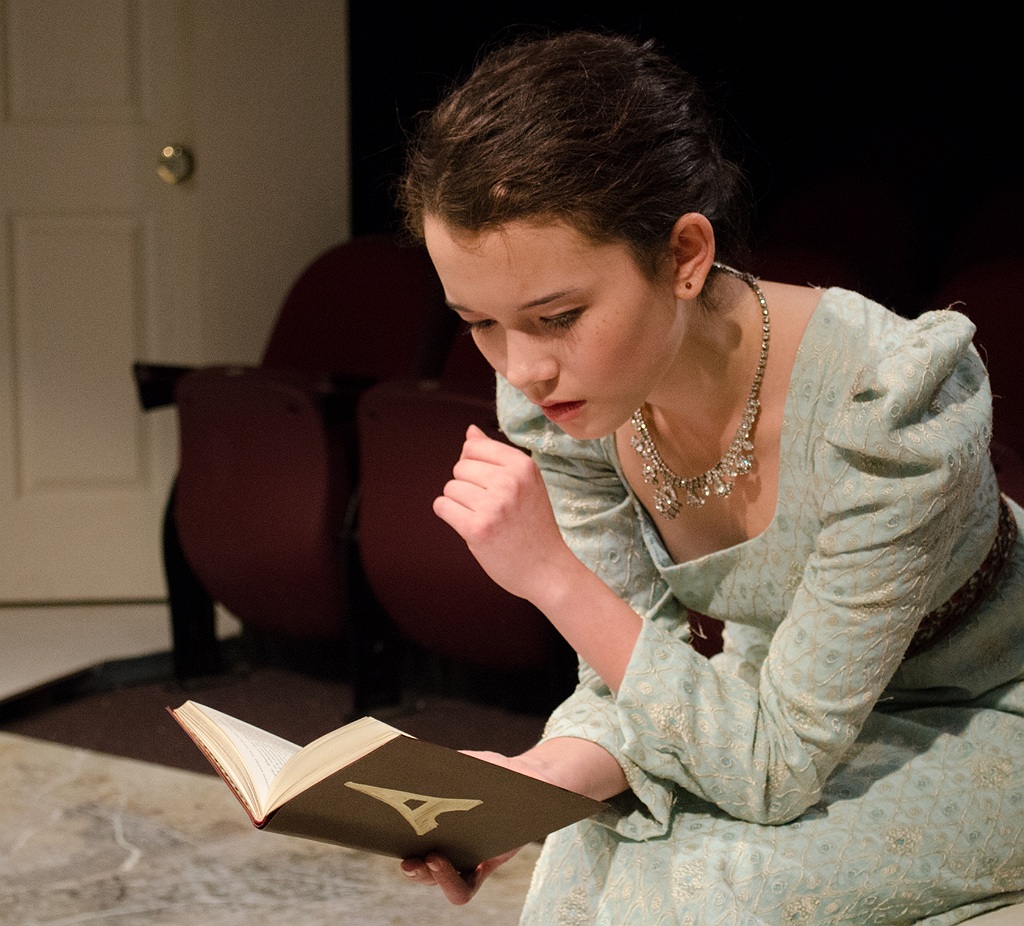Opening Nights
Arcadia
Seattle Public Theater at the Bathhouse, 7312 W. Green Lake Dr. N., 524-1300, seattlepublictheater.org. $15–$29. 7:30 p.m. Thurs.–Sat., 2 p.m. Sun. Ends June 8.
Tom Stoppard’s beloved and brilliant 1993 comedy takes place in the garden-fronting room of a Derbyshire manor called Sidley Park. Scenes alternate between 1809, when the owners supposedly hosted Lord Byron while redesigning the garden, and the present, when two competing academics scavenge the grounds for evidence to bolster their esoteric, career-making theories. Gigantic themes from math, philosophy, history, and science rub up against hilarious, petty, everyday stuff in one of the most satisfying, idea-rich, pitch-perfect scripts ever: an irresistible challenge for theater companies large and small.
But transferring the magic from page to stage relies on crystalline clarity of everything: diction, relationships, logistics. Arcadia is a Swiss watch of a play, especially when the two time periods overlap. As in other multi-era dramas that take place in unique, mythical houses (Bruce Norris’ Clybourne Park, for example), Sidley Park itself is a character—which presents a challenge in the tight confines of the Bathhouse Theater. Despite Craig Wollam’s elegant Georgian-era set (mostly occupied by a gigantic library table), there’s no room for director Kelly Kitchens to choreograph the bustle and froth in suitably grand scale, nor do we have the proper seating distance to observe the complex tale’s ingenious mechanics.
Notwithstanding the spatial handicap to this spirited production, the script’s hyper-articulate charms flourish in certain performances. In the modern period, pretentious Byron-biographing blaggard Bernard benefits from Evan Whitfield’s high-energy bravado, which screwballs well with Alyson Scadron Branner’s phlegmatic Hannah (a rival author). Trick Danneker and Jocelyn Maher are also excellent as the house’s modern heirs. Kitchens pushes some roles too far into caricature, though, principally the 19th-century poet/botanist Ezra Chater (Brandon Ryan). The situations and text are plenty funny minus the ham. Case in point: a lovely moment in which landscape gardener Noakes (Mike Dooly) is commanded to comment on the horrendous racket of a steam pump he’s implemented (a harbinger of the Industrial Revolution). Dooly’s blank look implies he hears nothing but the dulcet tones of this new kind of paradise, which is perfect . . . ’nuff said sans ham.
Trevor Young Marston makes an endearing Septimus Hodge, tutor to 13-year-old polymath Thomasina (Izabel Mar) back in the Byron era. However, Mar’s graceful movements and charm-school smile seem odd for Thomasina (she’s usually interpreted as more of an awkward nerd, which makes her arc more poignant). We’ve got to love her for the magic of the ending to bloom. That didn’t quite happen opening night, but who’s to say what a few more days in the hothouse might yield? Margaret Friedman
P#UNPROTECTED
Erickson Theater Off Broadway, 1524 Harvard Ave., whimwhim.org. $15–$25. 8 p.m. Wed.–Fri. Ends May 23.
Choreographer Olivier Wevers has made a series of smart moves since he launched his company Whim W’him in 2010, both onstage and off. With this latest program—his longest performance series to date—and dancers now on contract, he’s looking to create a permanent company rather than work with a constantly shifting pick-up group. Alongside Wevers’ own choreography, colleagues Andrew Bartee and Annabelle Lopez Ochoa now return with new works. All three have a similar background, moving from classical to contemporary dance, and this shared DNA is clear in the specificity and articulation of their movement choices. Whatever the differences in theme or mood, a basic kinetic thread runs through the evening.
The title of Ochoa’s Les Biches may refer back to Bronislava Nijinska’s work for the Ballets Russes, but this is far from that ballet of society manners. Brandishing bright red elongated finger extensions like talons or antennae that rattle when their hands vibrate, a quartet of women prowls through the space, challenging one another for dominance. If human beings are social animals, then these are their antecedents—if not female deer (biches), then some kind of fiercely rivalrous creature.
Bartee’s I’m here but it’s not the same opens with a series of simple adjustments, as dancers move slightly during a blackout to reappear in a different location when the lights come back up. They add other subtle shifts as well, changing shape or direction, all of it calm and uninflected. Gradually the random movements become disconcerting, patterns overlap, and some of the dancers interact. Bartee keeps to a minimal palette, even as the movement becomes more dense, maintaining a sense of restraint through to the end.
Wevers has done some of his best work to classical music, and Above the Cloud, set to Francis Poulenc’s Organ Concerto, is an excellent example of his musical intuition. Seven dancers in filmy white shirts have what could be described as a truly elegant pillow fight, dancing with a set of very large and very downy cushions. They drag them through the space; they clutch them and nap on them; they use them as a stopgap trampoline and as a palanquin. The plush of the pillows is matched by the luxury of the dancers’ movement, spinning and stretching in off-center abandon, inspiring us to go home and toss a couple pillows ourselves. SAndra Kurtz
E
stage@seattleweekly.com




